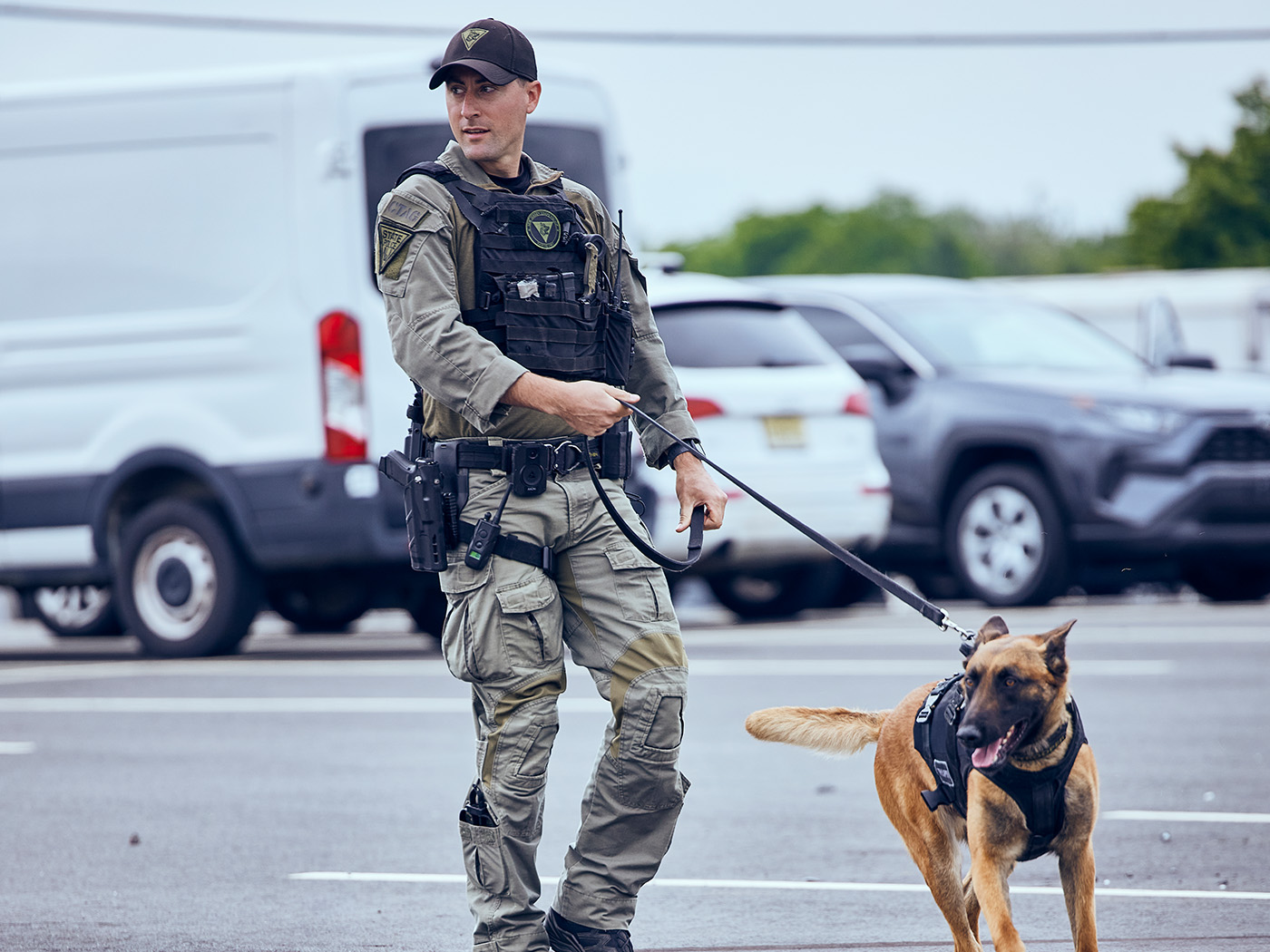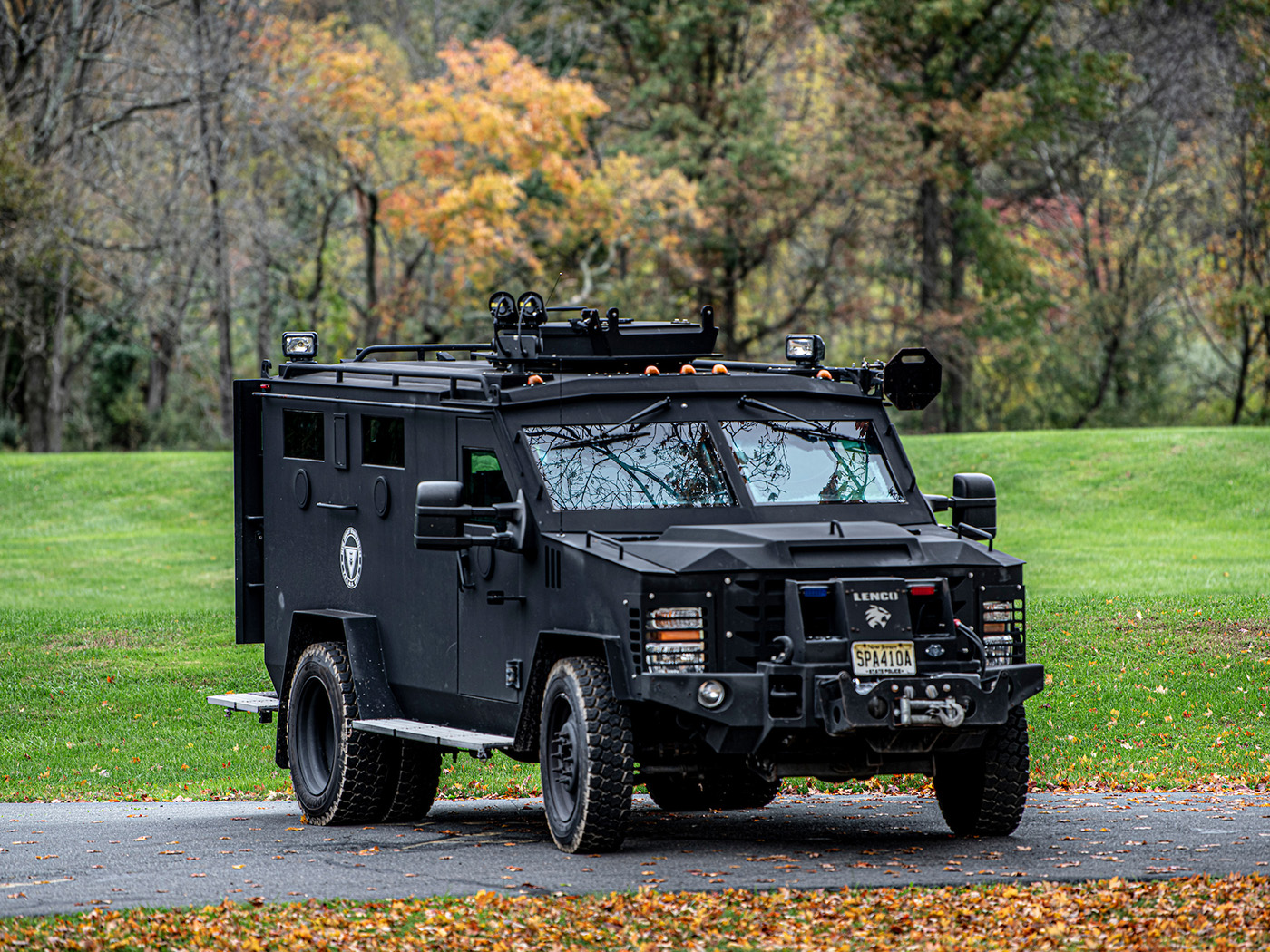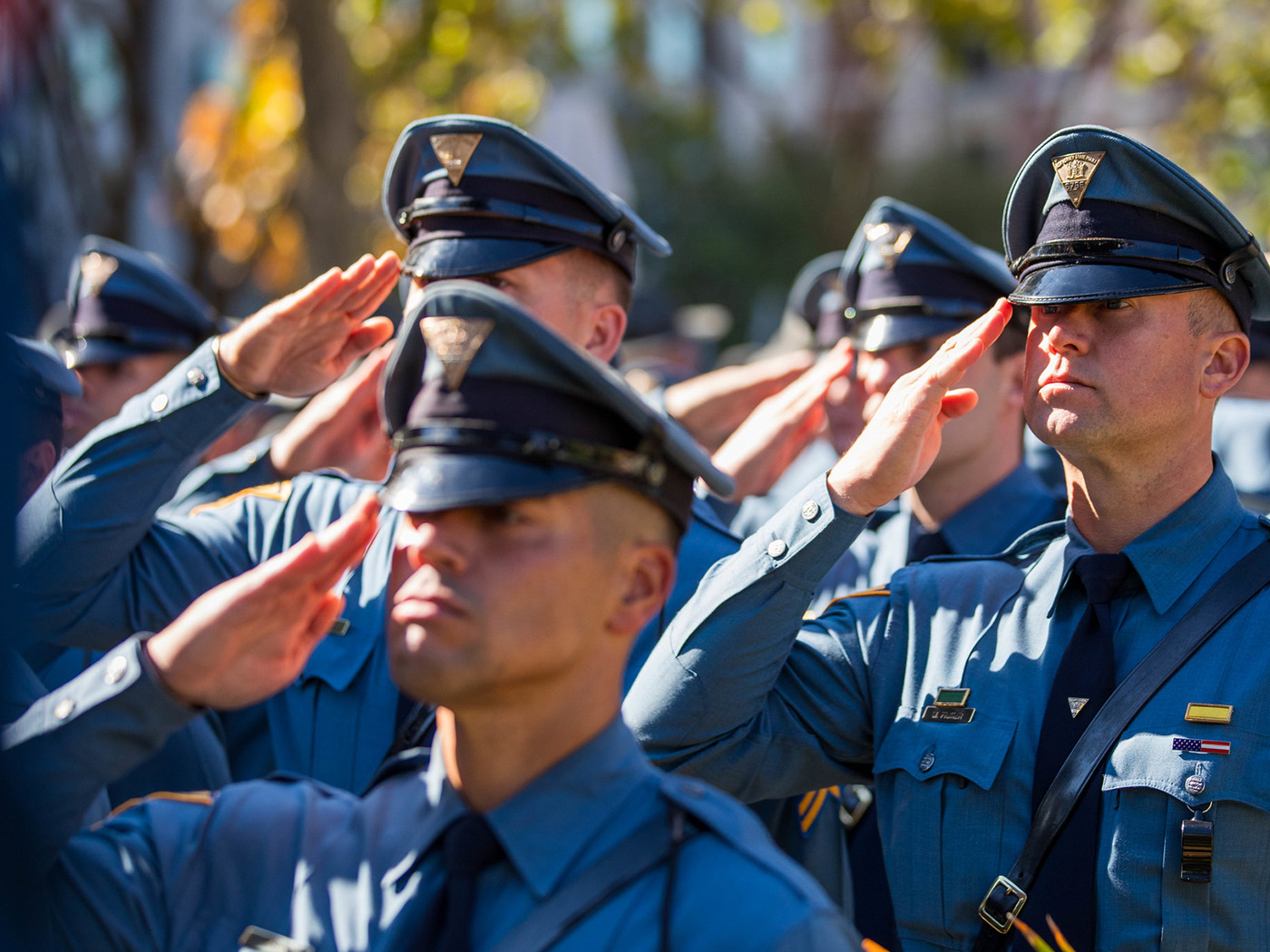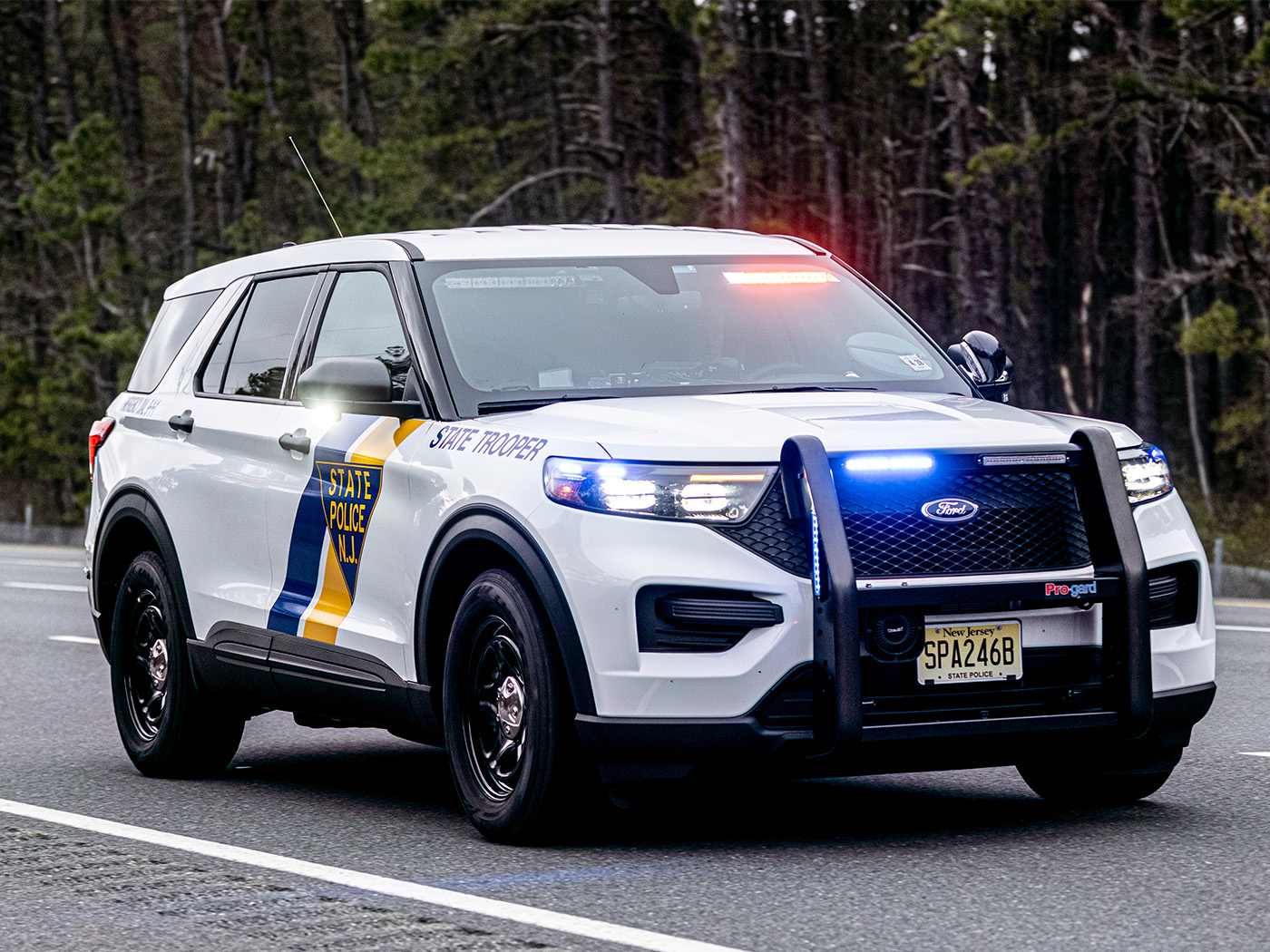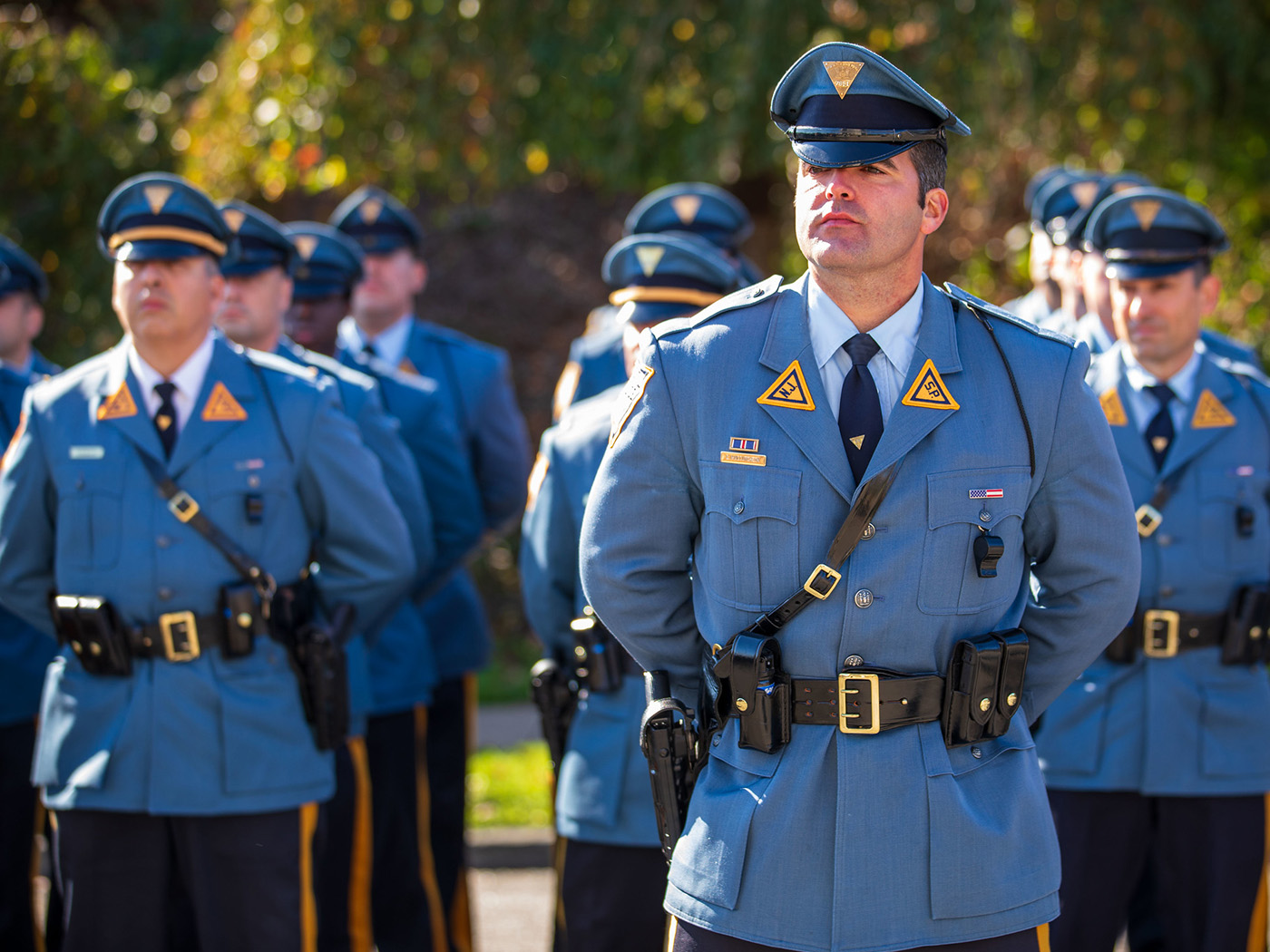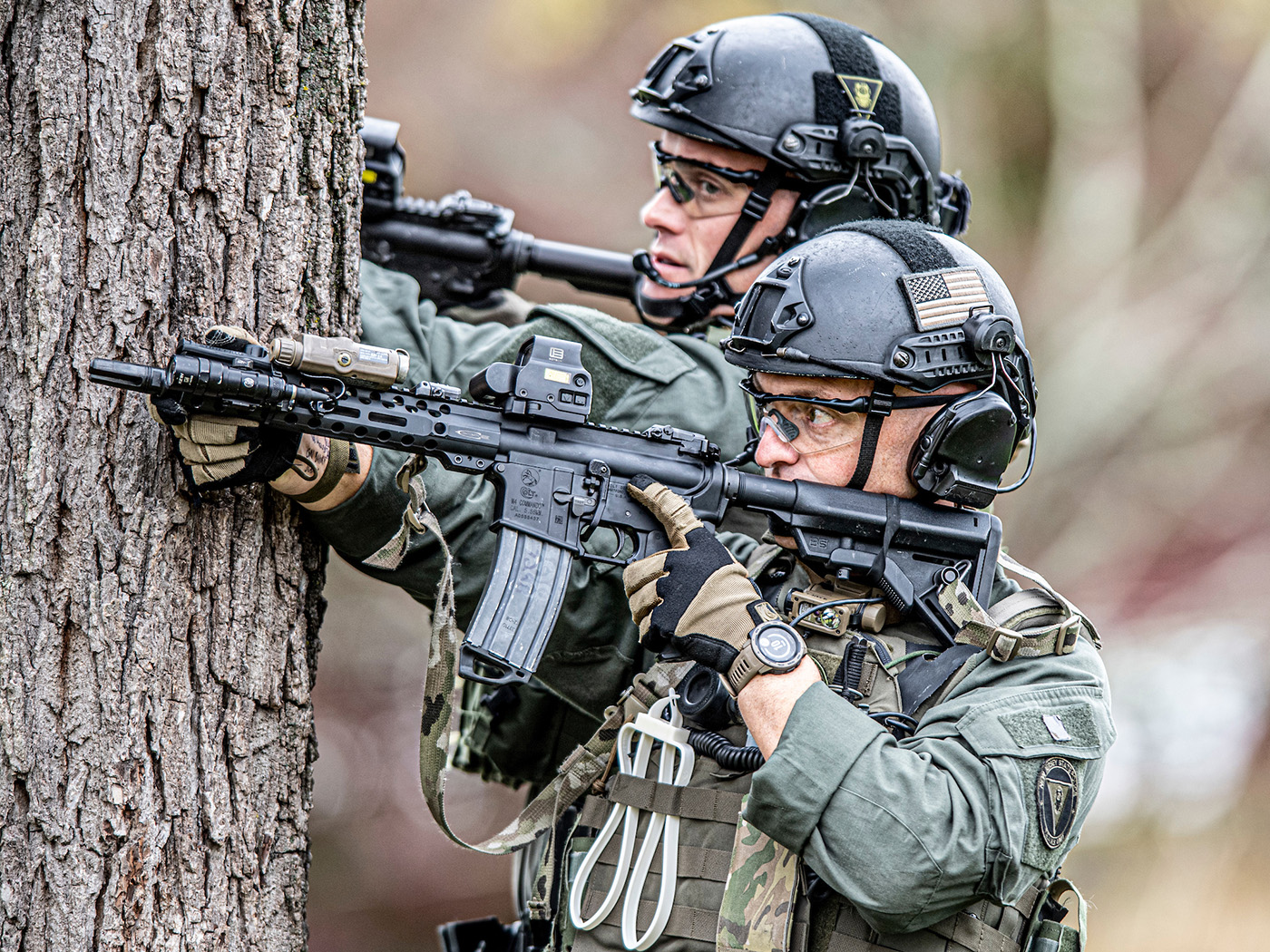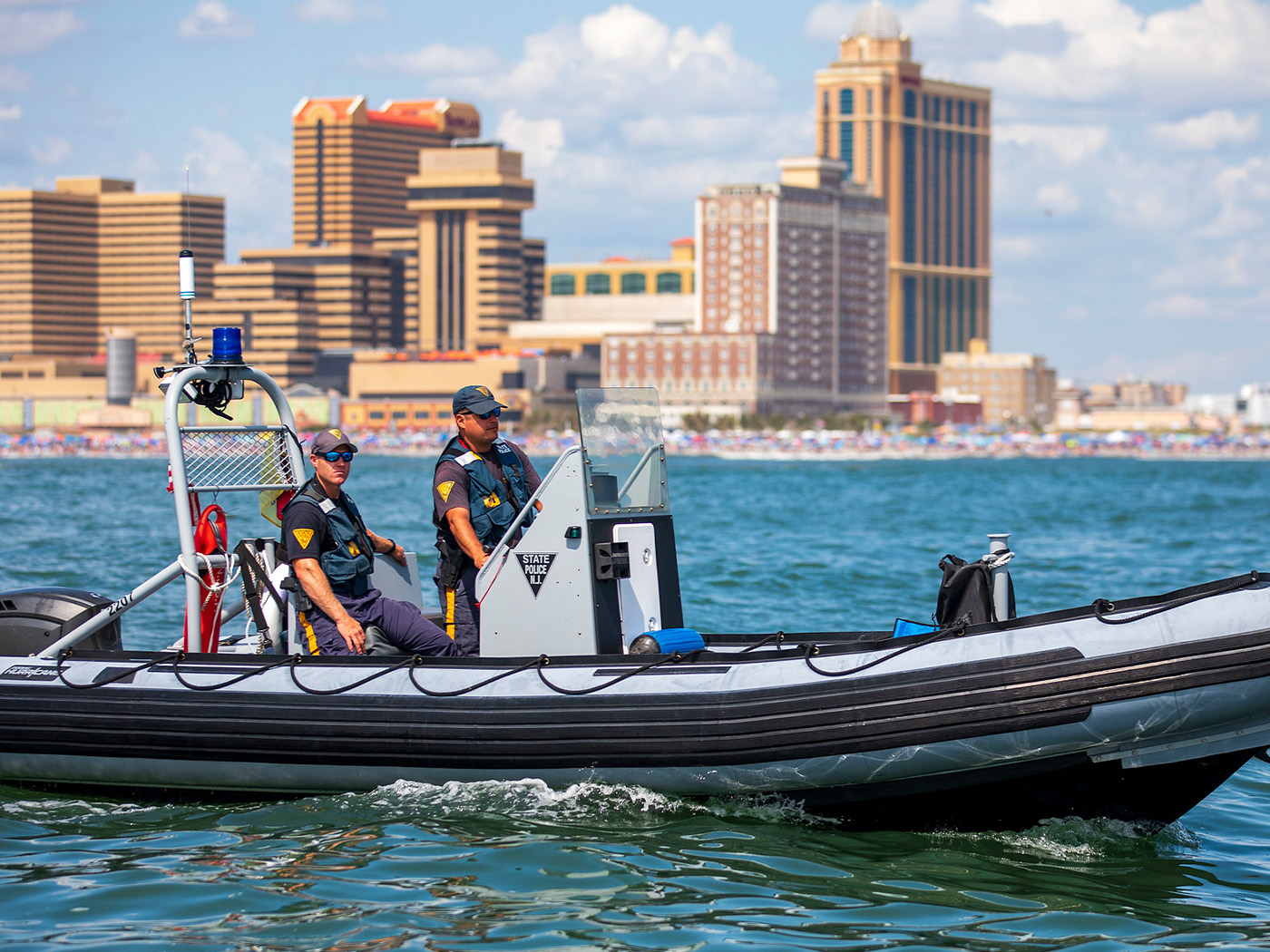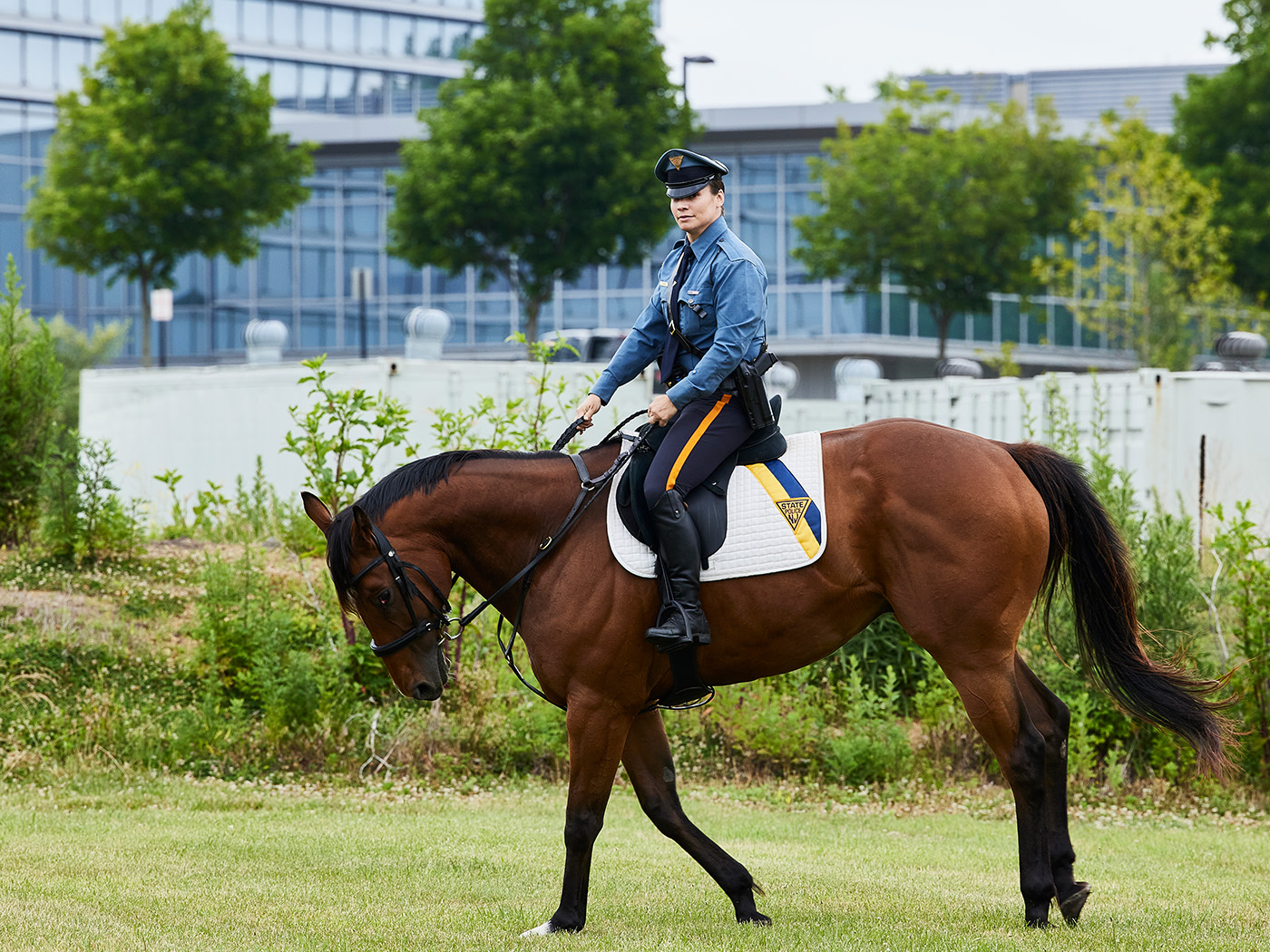About the (PQT)
The PQT consists of (3) timed tests. A description of each test is listed below. Following the description of each test is information related to training for each test. Participating in physical training exercises prior to taking the physical qualification tests will help you prepare for the tests.
PRIOR TO PARTICIPATING IN THE TRAINING YOU SHOULD CONSULT YOUR PHYSICIAN TO ENSURE IT IS SAFE FOR YOU TO ENGAGE IN THE NEW JERSEY STATE POLICE PHYSICAL FITNESS TRAINING REGIMENT.
New Jersey State Police Physical Qualification Test (PQT) Scoring:
-
Applicants are awarded between 0 – 7 points based on their performance for each test.
-
The scores for each test are added together to produce the applicant’s overall PQT score.
-
If the applicant’s combined point total is equal to 15 points or higher, the applicant has passed the test battery.
-
If the applicant’s combined point total is equal to 14 points or less, the applicant has failed the test battery.
NOTE:
Applicants must obtain at least one (1) point on each of the three tests. If an Applicant obtains “0” points on any of the three tests, he or she fails the test battery regardless of his or her scores on the remaining tests.
| Points | Push Ups | Sit Ups | 1.5 Mile Run |
|---|---|---|---|
| 0 | 17 or less | 20 or less | 14:27 or more |
| 1 | 18 - 19 | 21 - 22 | 14:26 - 14:18 |
| 2 | 20 - 21 | 23 - 24 | 14:17 - 14:09 |
| 3 | 22 - 23 | 25 - 26 | 14:08 - 14:00 |
| 4 | 24 - 26 | 27 - 29 | 13:59 - 13.51 |
| 5 | 27 - 32 | 30 - 34 | 13:50 - 13:00 |
| 6 | 33 - 46 | 35 - 48 | 12:59 - 11:32 |
| 7 | 47 or more | 49 or more | 11:31 or less |
Push Ups
The purpose of this test is to evaluate the muscular strength and muscular endurance in your upper body. The push ups will be performed in the standard position in which the front of the foot and hands are in contact with the floor. The feet are 8 to 12 inches apart and the arms are fully extended, directly under the shoulders, and slightly wider than shoulder width apart. The legs, buttocks, back, and shoulders must be in a straight alignment. On the command “GO”, keep the body fully extended and lower your torso towards the floor by flexing the elbows until the elbows form a 90 degree angle. Next extend to the starting position. Continue to complete push ups for two (2) minutes. Only correctly performed push ups will count. Your score will be the number of correct push ups completed in two (2) minutes.
To prepare for push ups, perform push ups following the procedures described above. Attempt to complete as many correct push ups as possible in (2) minutes. If unable to perform one push up, start in the initial position and lower the torso halfway toward the ground and extend to the extended position. Each time you practice, lower the torso closer to the ground until the correct position is achieved.
Sit Ups
The purpose of this test is to evaluate trunk strength. Attain a position lying on your back with the knees flexed at a 45 to 60 degree angle, feet together and approximately 18” from the buttocks. Fingers interlocked behind the head. The feet will be held in place during the test. On the command “GO” tuck the chin towards the chest, curl torso forward until the elbows touch the thighs. Once the elbows touch the thighs, return to a position in which the midback touches the floor. Once the midback touches the floor, perform another sit up. Continue to complete sit ups for two (2) minutes. Only correctly performed sit ups will count. Your score will be the number of correct sit ups completed in two (2) minutes.
To prepare for sit ups, perform sit ups following the procedures described above. Attempt to complete as many correct sit ups as you can in (2) minutes. If difficulty is experienced completing the sit ups, have a second person hold your feet. If you are unable to complete one sit up, practice coming halfway up and returning to the floor for one to two minutes. On each training day, attempt to perform full sit ups.
1.5 Mile Run
The purpose of this test is to evaluate aerobic capacity. On the command “GO” you will run 1.5 miles on a marked course.
To prepare for the 1.5 mile run, start by running 1.5 miles without stopping and note the time to complete the run. If unable to complete the distance, run as far as you can without stopping and note the distance and the time you ran. It is best to do this self test on a track. If you are unable to complete 1.5 miles without stopping, start by running for a time period of approximately 30 to 60 seconds less than you were able to achieve without stopping. Next walk for 30 seconds and then run the same distance again and walk for 30 seconds. Repeat this sequence until you have run 1.5 miles. Attempt to increase the running distance without stopping each time you run and decrease the walk time. Once able to complete the 1.5 miles without stopping, run part of the distance at a faster pace followed by a slower pace. Repeat this cycle throughout the 1.5 mile distance. If you are able to complete the 1.5 miles without stopping, start to pick up the pace for every other ¼ mile. In addition, interval training can be used to increase your speed and enable you to complete the 1.5 mile distance at a faster pace. Interval training involves running shorter to medium distances at a fast pace followed by walking or jogging between the intervals. For example, run 220 yards (1/2 around a track), walk 220 yards, and run 220 yards. Keep this up until you have completed four to five intervals. Increase the length of the interval and decrease the length of the walk to lower your time to complete the 1.5 mile run. Couple the interval training with running 1.5 miles continuously.
General Weight Training
Weight training can be used to increase muscular strength and muscular endurance. For most purposes weight training can only be performed every other day or three times per week. To determine starting weight for an exercise, choose a weight that you think you can use to complete 8-12 repetitions of the exercise. Next attempt to perform one set or 8-12 repetitions with this weight. If you are able to complete 12 repetitions increase the weight. If you are unable to complete 8-12 repetitions but can complete four or more, continue to use this weight until you have achieved 8-12 repetitions. If you are unable to complete four repetitions, lower the weight. To increase muscular endurance, lower the weight and attempt to complete 15-20 repetitions.
Swim Requirement
The swimming program in the Academy is fast paced and requires recruits to have a certain degree of swimming proficiency. Emphasis is placed on “Survival” of the recruit when confronted with water emergencies.
Each recruit is required to pass a minimum skills test. The minimum skills test consists of swimming 50 yards followed by treading water continuously for 5 minutes. The academy approved swim techniques are limited to either the freestyle stroke or breast stroke. If a recruit cannot pass the minimum skills test or meet the requirements of the Water Safety Program he/she will be placed in the remedial swim program.





